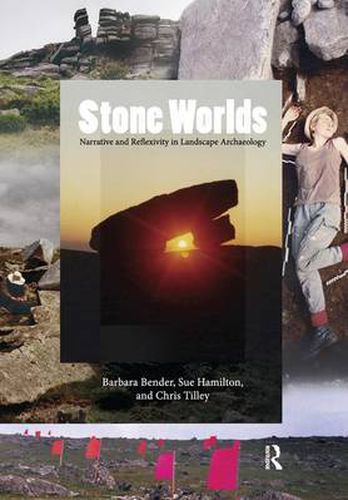Readings Newsletter
Become a Readings Member to make your shopping experience even easier.
Sign in or sign up for free!
You’re not far away from qualifying for FREE standard shipping within Australia
You’ve qualified for FREE standard shipping within Australia
The cart is loading…






This book represents an innovative experiment in presenting the results of a large-scale, multidisciplinary archaeological project. The well-known authors and their team examined the Neolithic and Bronze Age landscapes on Bodmin Moor of Southwest England, especially the site of Leskernick. The result is a multivocal, multidisciplinary telling of the stories of Bodmin Moor - both ancient and modern - using a large number of literary genres and academic disciplines. Dialogue, storytelling, poetry, photo essays and museum exhibits all appear in the volume, along with contributions from archaeologists, anthropologists, sociologists, geologists, and ecologists. The result is a major synthesis of the Bronze Age settlements and ritual sites of the Moor, contextualized within the Bronze Ages of southwestern and central Britain, and a tracing of the changing meaning of this landscape over the past five thousand years. Of obvious interest to those in British prehistory, this is a substantial presentation of a groundbreaking project that will also be of interest to many concerned with the interpretation of social landscapes and the public presentation of archaeology.
$9.00 standard shipping within Australia
FREE standard shipping within Australia for orders over $100.00
Express & International shipping calculated at checkout
This book represents an innovative experiment in presenting the results of a large-scale, multidisciplinary archaeological project. The well-known authors and their team examined the Neolithic and Bronze Age landscapes on Bodmin Moor of Southwest England, especially the site of Leskernick. The result is a multivocal, multidisciplinary telling of the stories of Bodmin Moor - both ancient and modern - using a large number of literary genres and academic disciplines. Dialogue, storytelling, poetry, photo essays and museum exhibits all appear in the volume, along with contributions from archaeologists, anthropologists, sociologists, geologists, and ecologists. The result is a major synthesis of the Bronze Age settlements and ritual sites of the Moor, contextualized within the Bronze Ages of southwestern and central Britain, and a tracing of the changing meaning of this landscape over the past five thousand years. Of obvious interest to those in British prehistory, this is a substantial presentation of a groundbreaking project that will also be of interest to many concerned with the interpretation of social landscapes and the public presentation of archaeology.